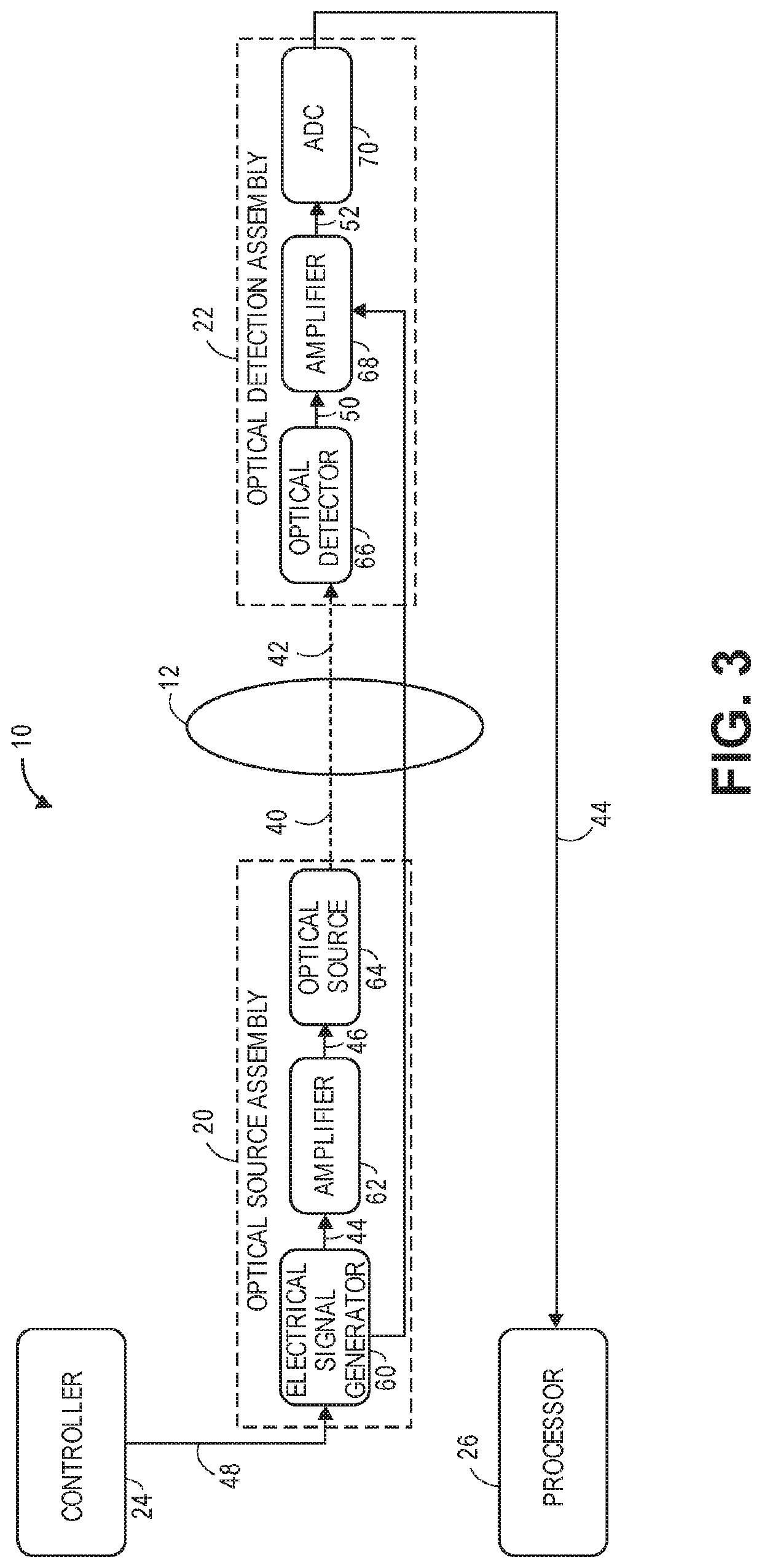Non-invasive frequency domain optical spectroscopy for neural decoding
- Summary
- Abstract
- Description
- Claims
- Application Information
AI Technical Summary
Benefits of technology
Problems solved by technology
Method used
Image
Examples
Embodiment Construction
[0068]Referring first to FIG. 1, one embodiment of an optical non-invasive measurement system 10 constructed in accordance with the present inventions will now be described. The optical measurement system 10 is designed to non-invasively detect and localize a physiological event in an anatomical structure 12. In the illustrated embodiments, the anatomical structure 12 is a brain. Although for exemplary purposes, the optical measurement system 10 is described herein as being used to detect and localize a physiological event in brain tissue, variations of the optical measurement system 10 can be used to detect and localize a physiological event in other anatomical parts of a human body, animal body and / or biological tissue.
[0069]Although the optical non-invasive measurement system 10 is initially described as creating one optical path 14 through the brain 12, in a practical implementation, variations of the optical non-invasive measurement system 10 described herein will create multip...
PUM
 Login to View More
Login to View More Abstract
Description
Claims
Application Information
 Login to View More
Login to View More - R&D
- Intellectual Property
- Life Sciences
- Materials
- Tech Scout
- Unparalleled Data Quality
- Higher Quality Content
- 60% Fewer Hallucinations
Browse by: Latest US Patents, China's latest patents, Technical Efficacy Thesaurus, Application Domain, Technology Topic, Popular Technical Reports.
© 2025 PatSnap. All rights reserved.Legal|Privacy policy|Modern Slavery Act Transparency Statement|Sitemap|About US| Contact US: help@patsnap.com



